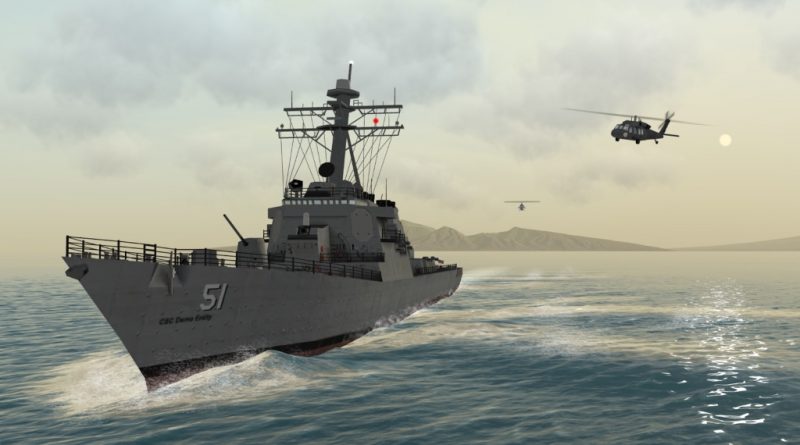Military training is costly when it involves live, in-the-field exercises.
Virtual reality (VR) presents opportunities to reduce these costs while providing dynamic, new forms of training.
The Ministry of Defence has released figures showing how much it costs to train a soldier in the British Army.
The average figure, to pass basic training, is £38,000 and that is only for the shortest course. Once you take into account advanced, specialist training and combat exercises involving more equipment, then costs will rise exponentially.
Live training scenarios do provide realistic, immersive scenarios for trainees, in which they can critical practice tasks, manoeuvres and exercises. However, it is also extremely expensive as it involves constructing physical setting together with the costs of expert instructors.
Military budgets are feeling the strain, and alongside these costs there are other challenges that come with training.
Challenges of Military Training
How does the military continue to provide high levels of training to its ground forces under time and budget constraints?
The process itself is ongoing, where trainees learn fresh skills and hone existing ones. The training must be demanding enough to put troops through their paces, so that they are fully prepared should they then be deployed to a real-world combat situation, but live, realistic training is costly, and it has inherent risks.
And, there is the possibility of damage to expensive military equipment and hardware, such as vehicles and weapons.
This being said, while some essential training elements can be covered theoretically, it is no substitute for a live experience.
Trainees must learn how to make critical decisions in the field while under pressure, and they need to be nurtured to apply skills, often in scenarios which do not follow expected paths or patterns.
Another challenge in training a modern fighting force comes with the integration of advanced technology and communications into warfare. Increasingly, battles are fought both in cyberspace and on the field, and the military must prepare its fighters for this.
Virtual Reality in Military Training
Trainees can enhance their war-fighting skills and experience scenarios that are immersive, and feel real, using virtual reality platforms and hardware.
In these vivid simulation environments, personnel take part in exercises that involve mission-critical situations and operations.
This is high-level military training that combines cognitive learning with hands-on experience.
MAK ONE’s simulation platform creates realistic environments for military exercises, including weather conditions and challenging terrains.
Personnel then immerse themselves in these environments, through the first-person experience of an advanced Varjo VR headset, creating a virtual human-eye resolution and movements that enable extremely realistic training.
The individual is at the centre of the action, engaging with the environment and the challenges of the military training exercise. These two elements: the simulation environment and the individual’s first-person engagement, are fundamental factors in virtual reality training.
However, in a military setting, they go far beyond standard VR platforms and packages.
Virtual reality training can broaden the capabilities for the scope and intensity of training that the military provides to personnel. It is not simply about finding a cost-effective alternative to live training exercises. These enhanced capabilities are demonstrated in live virtual constructive (LVC) training.
Our sister company, MAK Technologies, is integrating its capabilities with Varjo VR headsets to provide comprehensive training solutions for soldiers.
LVC Training with VR Headsets
Live virtual constructive training is a fully integrated form of military training, combining the three parts of its title; live, virtual and constructive.
The live element involves real equipment, vehicles and platforms.
Meanwhile, the virtual part draws on various simulation levels to create virtual training environments.
Constructive refers to computer generated forces (CGF) that are AI-controlled within the virtual training environment.
In LVC training, personnel are put in real-life scenarios that require real-life decisions and actions. But, crucially, it also involves virtual components.
For any simulation to be effective, the individual must be at the heart of it, to experience things for themselves. In LVC training, the level of interaction is highly immersive, using VR headsets or visual displays that enable this.
CGF software provides the basis for creating tactical simulations within this training environment, including different terrains, sensors, weapons and communications.
By integrating these training elements, LVC provides a comprehensive platform that allows for multiple transmission of experiences and data during a single exercise.
To find out more about LVC Training, join our Annual MAK User Conference
Participants, via VR headsets, experience things at an individual level, but also interact with others, while instructors and command centres maintain a close overview.
Systems can track individual performances using sophisticated analytics and provide accurate mission statistics for assessment and review.
Conclusion
Like other organisations, the defence sector must find ways of maintaining operational excellence and enhancing the capabilities of its personnel, while keeping one eye on its spending.
Training can eat into this budget considerably, especially where live scenarios and exercises involving troop movements and equipment are concerned.
Virtual training using advanced simulation platforms, software and hardware, including VR headsets, provides an integrated and cost-effective training solution.
It minimises the logistics required for live training but enhances the as-lived experience of the individual, while retaining a broader, strategic context.
ST Engineering Antycip, in partnership with MAK and its collaboration with Varjo, specialises in delivering expert virtual reality training to the military.
For more information, please contact us today.




















